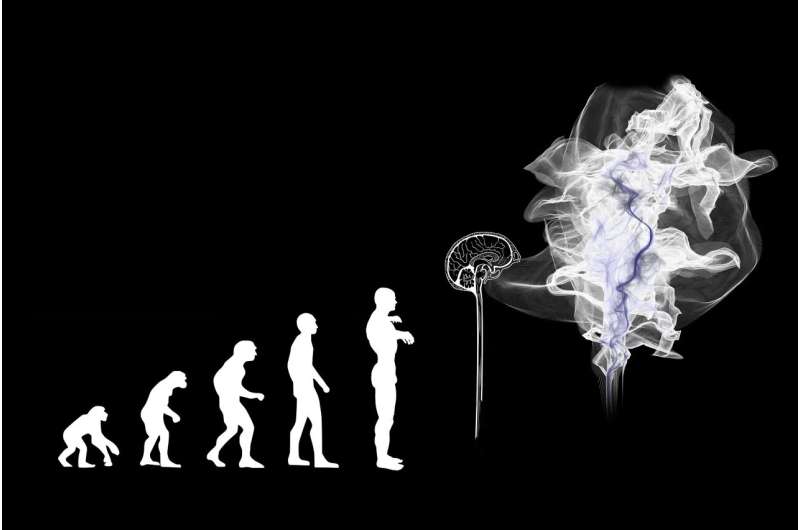What makes the human brain different? Study reveals clues

What makes the human brain distinct from that of all other animals—including even our closest primate relatives? In an analysis of cell types in the prefrontal cortex of four primate species, Yale researchers identified species-specific—particularly human-specific—features, they report Aug. 25 in the journal Science.
And they found that what makes us human may also makes us susceptible to neuropsychiatric diseases.
For the study, the researchers looked specifically at the dorsolateral prefrontal cortex (dlPFC), a brain region that is unique to primates and essential for higher-order cognition. Using a single cell RNA-sequencing technique, they profiled expression levels of genes in hundreds of thousands of cells collected from the dlPFC of adult humans, chimpanzees, macaque, and marmoset monkeys.
"Today, we view the dorsolateral prefrontal cortex as the core component of human identity, but still we don't know what makes this unique in humans and distinguishes us from other primate species." said Nenad Sestan, the Harvey and Kate Cushing Professor of Neuroscience at Yale, professor of comparative medicine, of genetics. and of psychiatry, and the lead senior author of the paper. "Now we have more clues."
To answer this, the researchers first asked whether there are there any cell types uniquely present in humans or other analyzed non-human primate species. After grouping cells with similar expression profiles they revealed 109 shared primate cell types but also five that were not common to all species. These included a type of microglia, or brain-specific immune cell, that was present only in humans and a second type shared by only humans and chimpanzees.
The human-specific microglia type exists throughout development and adulthood, the researchers found, suggesting the cells play a role in maintenance of the brain upkeep rather than combatting disease.
"We humans live in a very different environment with a unique lifestyle compared to other primate species; and glia cells, including microglia, are very sensitive to these differences," Sestan said. "The type of microglia found in the human brain might represent an immune response to the environment."
An analysis of gene expression in the microglia revealed another human-specific surprise—the presence of the gene FOXP2. This discovery raised great interest because variants of FOXP2 have been linked to verbal dyspraxia, a condition in which patients have difficulty producing language or speech. Other studies have also shown that FOXP2 is associated with other neuropsychiatric diseases, such as autism, schizophrenia, and epilepsy.
Sestan and colleagues found that this gene exhibits primate-specific expression in a subset of excitatory neurons and human-specific expression in microglia.
"FOXP2 has intrigued many scientists for decades, but still we had no idea of what makes it unique in humans versus other primate species," said Shaojie Ma, a postdoctoral associate in Sestan's lab and co-lead author. "We are extremely excited about the FOXP2 findings because they open new directions in the study of language and diseases."
More information: Shaojie Ma et al, Molecular and cellular evolution of the primate dorsolateral prefrontal cortex, Science (2022). DOI: 10.1126/science.abo7257. www.science.org/doi/10.1126/science.abo7257


















